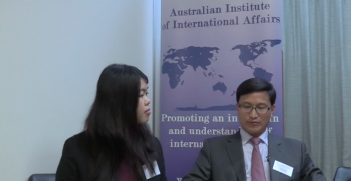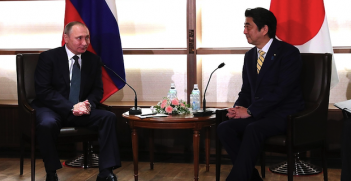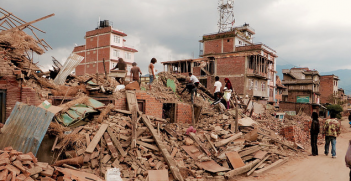Will ASEAN Survive Until 2030?

ASEAN is now 53 years old. All dialogue partners now pay ritual obeisance to “ASEAN centrality,” yet ASEAN’s relevance is still regularly questioned.
This is an article published earlier this year and selected by our committee of commissioning editors as one of the best of 2020.
This was part one of a three-part series on the ongoing relevance of ASEAN in regional cooperation as strategic tension rises between the US and China. Part II was published on September 24 and Part III was published on October 1.
The question of ASEAN’s survival is rhetorical, but not entirely so. Coming after several failed experiments in regionalism, ASEAN’s formation in 1967 was greeted with polite scepticism. ASEAN continued to be regarded with scepticism by most countries during the 1970s, with Japan a notable exception after the Fukuda Doctrine was announced in 1977. It was only during the 1980s that ASEAN began to be taken seriously, when its handling of the Cambodian issue showed what it could do.
The same criticisms of ASEAN that emerged 23 years ago during the Asian financial crisis have been regularly repeated since then. The repetitive nature of the criticisms and the prescriptions that flow from them suggest that after more than half a century, the organisation is still fundamentally misunderstood. Whether this is due to ASEAN’s inability to call things by their proper name – which, I assure you, is not mere perversity on ASEAN’s part — or a stubborn refusal by others to accept ASEAN on its own terms, I will not venture to guess. Of course, not all the scepticism about ASEAN is undeserved. But as I have previously observed, it is utterly pointless to criticise a cow for being an imperfect horse. If ASEAN is to be criticised, it should be for the right reasons.
A recent special report entitled “Built for Trust, Not for Conflict: ASEAN Faces the Future” prepared for the US Institute for Peace (USIP) is a convenient point of departure. It is a typical example of the genre of ASEAN criticism in that the authors mean well, but their understanding of Southeast Asia is ahistorical. Consequently, their understanding of ASEAN is flawed, and some of their recommendations would certainly reduce the odds of ASEAN surviving until 2030.
To avoid misrepresenting the argument, let me use the authors’ own summary:
ASEAN was designed as a trust-building mechanism for its members rather than as a platform for mediating disputes. Historically, ASEAN has been able to minimize interstate conflict because of an adherence to the principles of consensus, non-interference, and the peaceful resolution of disputes. Its many meetings and informal social gatherings build interpersonal trust, enabling many disputes to be settled without resort to formal legal mechanisms. This emphasis, however, prevents it from effectively intervening in intrastate conflicts considered domestic issues. Nor is it equipped to handle interstate disagreements that cannot be solved on the sidelines of meetings. Pressure on ASEAN to reform its structure and culture comes from the changing security dynamic and the influence of external actors in the region, particularly China and the United States. One of the most pressing issues for consideration is the continued relevance and feasibility of ASEAN’s principle of consensus-based decision making in light of the emerging challenges presented by increasing U.S.-China competition.
This is a standard line of argument: criticising a cow for being an imperfect horse. ASEAN was not designed as a “trust-building mechanism.” It is true that ASEAN’s fundamental purpose is to manage relations between its members. ASEAN projects are as important as means to this fundamental end as they are important in themselves. However, ASEAN manages relations not so much by building trust, but by managing mistrust. These are not the same things. If the first premise is wrong, all that follows cannot but be error.
ASEAN emerged from the ferment of post-World War II Southeast Asia and the tangled processes of decolonialisation and nation-building in the context of the Cold War. The immediate question was how to deal with an Indonesia that had just ended Konfrontasi in mid-1966. The broader question was how to avoid getting drawn into the proxy conflicts raging on the mainland.
The causes of Konfrontasi lay in Indonesian domestic politics. But as the late George McTurnan Kahin, a distinguished scholar of Southeast Asia, wrote in 1964 when Konfrontasi was still ongoing, the “… most fundamental [reason] is the powerful, self-righteous thrust of Indonesian nationalism.” He went on to explain that “Among Indonesians there has developed a widely held belief that because of the country’s size and armed power, and because it won its independence through revolution, it has a moral right to leadership in Asia.”
What ought to be obvious, but nevertheless needs to be emphasised, is that Indonesia’s size and its consequent presumption of leadership, is a permanent condition. Indonesia is bigger than all the other ASEAN members combined. Indonesia has not become smaller, and it is now stronger. What Kahin wrote 56 years ago is still an accurate description of Indonesian attitudes, albeit now more discreetly manifested and with less emphasis on Indonesia’s revolutionary origins.
Southeast Asia’s most salient characteristic is diversity based on primordial identities defined by race and religion. Their influence was manifest in many of the events leading up to ASEAN’s formation. One earlier attempt at regionalism – MAPHILINDO – was explicitly based on race, and the paroxysm of blood-letting that followed the abortive 1965 Gestapu Coup in Indonesia had a distinct anti-Chinese dimension, both internally and in Indonesia’s relations with China. Race and religion are also permanent factors. In principle, one could change one’s religion. But because in Southeast Asia race and religion are closely correlated, this is more a theoretical rather than a practical proposition.
Race and religion are still fundamental driving forces in the politics and international relations of Southeast Asia. ASEAN kept the peace in Southeast Asia by easing the innate suspicions, complications, and tensions that are attendant upon these permanent conditions. But ASEAN did not and cannot erase them. Permanent conditions are just that: permanent. Like chronic diseases, they can be ameliorated and managed, but they will never go away.
Time, and the accumulated experience of working together, has built more mutual confidence and blunted the sharper edges of these factors. But they are still there, lurking beneath ASEAN’s surface civilities, and not so deeply buried as to prevent them from still occasionally surfacing in new forms. We live in an age when identity politics is asserting itself globally. As what one scholar has called “the rising politics of indigeneity in Southeast Asia” becomes more prominent, the risk of primordial identities resurfacing in destructive ways can only rise.
Bilahari Kausikan is currently chairman of the Middle East Institute, an autonomous institute of the National University of Singapore. He has spent his entire career in the Ministry of Foreign Affairs. During his 37 years in the Ministry, he served in a variety of appointments at home and abroad, including as Ambassador to the Russian Federation, Permanent Representative to the UN in New York, and as the Permanent Secretary to the Ministry. Raffles Institution, the University of Singapore, and Columbia University in New York all attempted to educate him.
This article is an adaptation of the webinar presented by Ambassador Bilahari Kausikan to the AIIA National Office on 10 September 2020. A recording of the webinar is available on YouTube.





